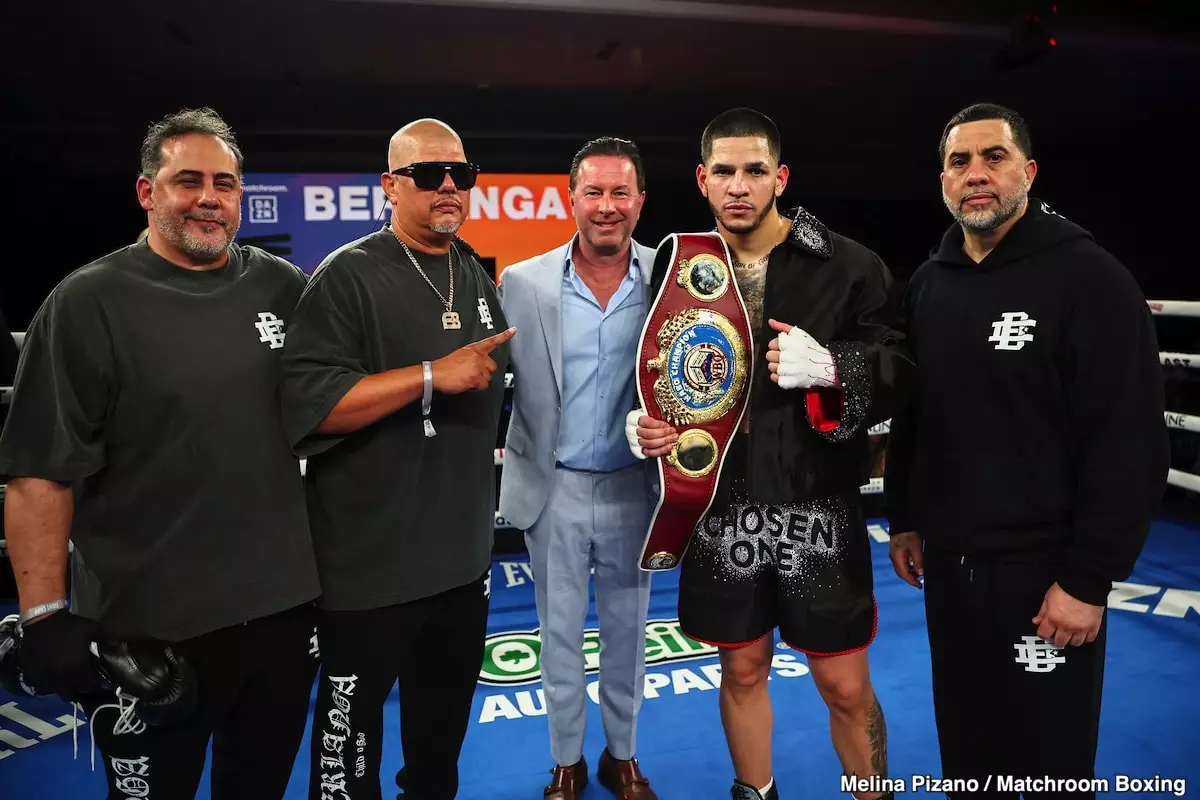In a curious turn of events, Ring Magazine has announced a double-feature fight night on July 12th in New York City that raises eyebrows rather than excitement. Featuring Edgar Berlanga and Hamzah Sheeraz alongside the more electrifying Shakur Stevenson and William Zepeda, the arrangement has shrouded the evening in a haze of confusion. Although the week leading up to the fights will spotlight Stevenson-Zepeda as the main attraction, fight night will ironically crown Berlanga and Sheeraz as the headliners. This unusual format begs an important question: how will this affect both audience excitement and traditional boxing protocols?
The dissonance between the marketing approach and the actual fight order could alienate fans looking for genuine boxing prowess. Berlanga, with a record of 23-1 and 18 knockouts, and Sheeraz, undeterred with 21 wins and one draw, simply lack the marquee appeal and credibility compared to their co-features. Many observers perceive them as products of a calculated promotional strategy rather than authentic talents destined for greatness. Billed as co-main events, it feels like a vague attempt to pacify boxing enthusiasts, and it delineates what is, frankly, a boxing hierarchy that disregards the caliber of fighters.
A Clash of Expectations and Reality
Spectators heading into the venue or streaming the event through DAZN PPV might find themselves grappling with conflicting expectations. For an audience hungry for skill and tactical brilliance, Berlanga vs. Sheeraz, while perhaps dramatic in its own right, feels low-stakes and far less significant than a fight featuring Stevenson, the rising star who’s capturing attention with every bout he fights against serious contenders.
The marketing team’s decision to brand Stevenson-Zepeda as the headliner—only for it to be overshadowed by Berlanga-Sheeraz on fight night—indeed risks muddling public perception. Effectively, it creates a ruse; disillusioned fans may come to feel deceived, sensing that they’ve been coerced into a purchase under false pretenses. If the goal was a surge in pay-per-view purchases, one must question whether sacrificing genuine enthusiasm for fleeting sales is a worthy exchange.
Who Really Captures the Audience?
True boxing aficionados are perceptive and can easily distinguish depth from shallow offerings. The notion that Berlanga and Sheeraz should somehow share equal stage with Stevenson-Zepeda feels as if it’s less about sport and more about exploiting marketable names and the allure of a late-night fight. Boxing fans aren’t wanting to see “fake fighters” merely padded by promotions; they want authenticity, blood, sweat, and an actual display of skill that showcases the sport’s rich tradition.
To merely toss Berlanga and Sheeraz into the spotlight because they fit market strategies only invites discontent among viewers who crave a spectacle representative of the sport’s potential. With all due respect to them both, their fights may end up being the very definition of “filler.” Ultimately, the history of boxing resonates with narratives of genuine grit, heart, and determination, narratives that are compromised when the art itself takes a backseat to strategic marketing games. By choosing revenue over authenticity, Ring Magazine might well tarnish the integrity of boxing as a whole.

